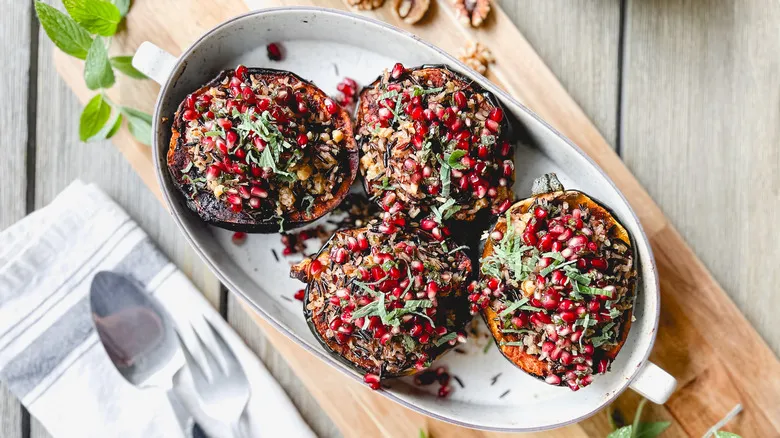Gather the wild rice and walnut-stuffed acorn squash ingredients
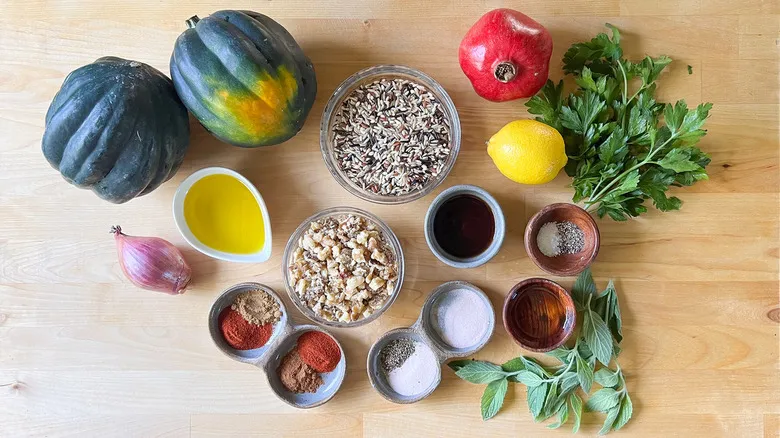
To start this recipe, gather two large acorn squashes and prepare a dry rub using a blend of smoked paprika, chili powder, cinnamon, and cumin for roasting the squash. Sauté shallots to infuse a wild and brown rice mixture, then incorporate raw walnuts to create the filling. In the second part of the recipe, mix pomegranate arils with vinegar, lemon juice, Italian parsley, mint, olive oil, and a pinch of salt and pepper to make a relish topping. While pomegranate vinegar is ideal for amplifying the fruit's flavor, red wine vinegar can be used as a suitable alternative.
Step 1: Preheat the oven

Set the oven temperature to 400°F.
Step 2: Prepare the squash
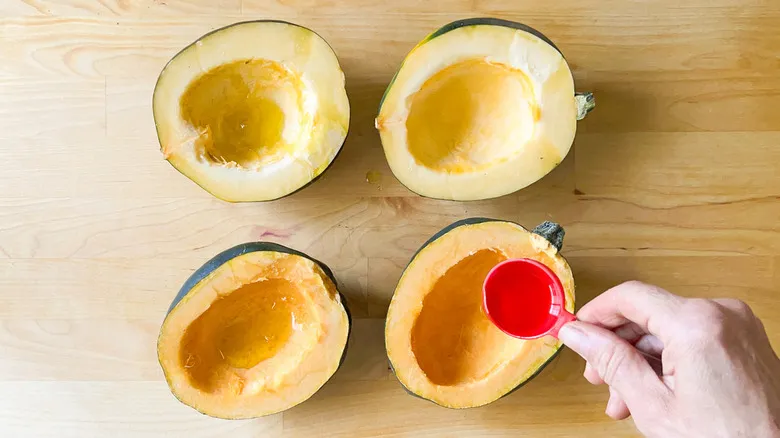
Pour ½ tablespoon of olive oil over each half of the squash.
Step 3: Make the dry rub
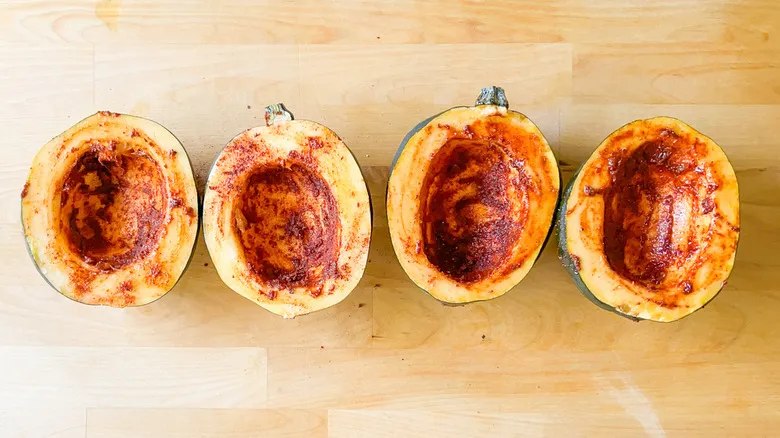
Mix the spices, 1 teaspoon of sea salt, and pepper in a small bowl. Evenly distribute this mixture into the halves, using your fingers to coat the flesh.
Step 4: Roast the squash
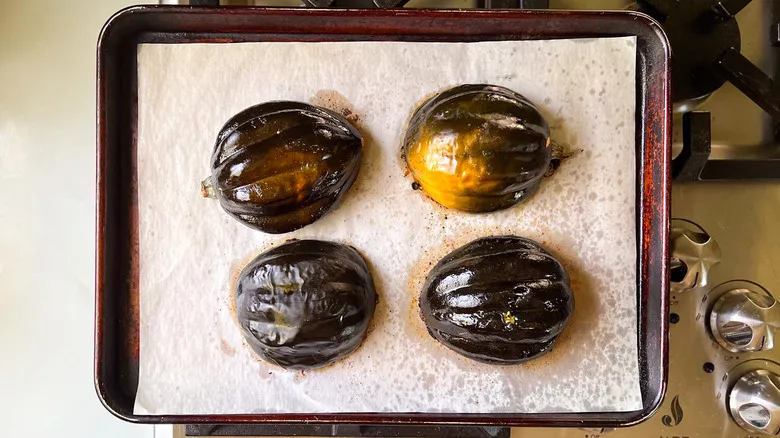
Position each squash half, cut side down, on a baking sheet lined with parchment paper, and roast in the oven until the squash is tender when pierced with a fork (approximately 30 minutes).
Step 5: Heat water for the rice
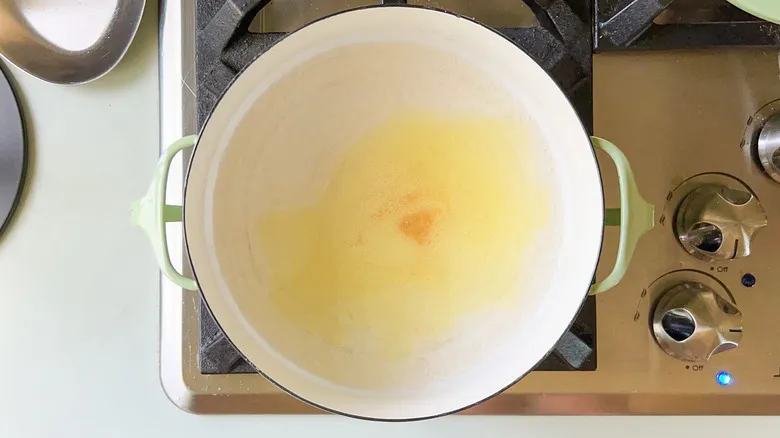
As the squash roasts, heat water in a medium pot until it reaches a boil, adding 1 tablespoon of olive oil and 1 teaspoon of sea salt.
Step 6: Add the rice to the pot
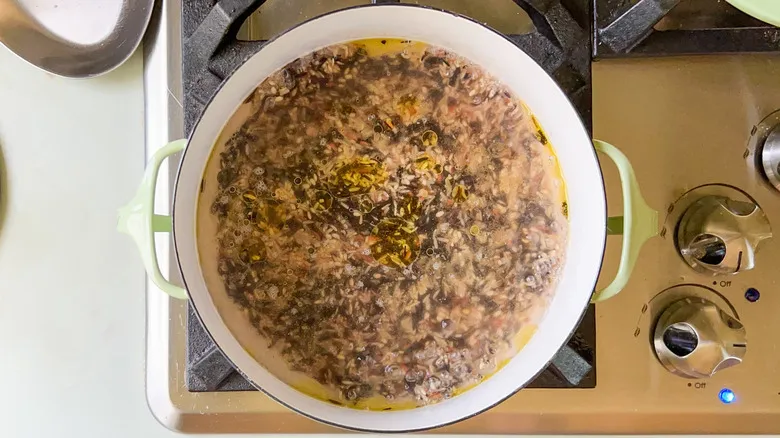
Place the rice into the pot and mix it.
Step 7: Cover and cook the rice

Lower the heat to a gentle simmer, cover, and let it cook for 50 minutes.
Step 8: Finish the rice
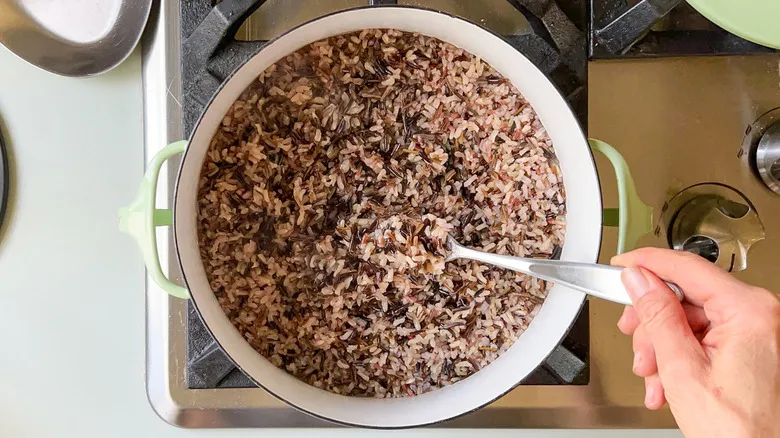
Remove the heat and allow the rice to rest and steam for an additional 5 minutes. Uncover, fluff it with a fork, and let it cool for a bit.
Step 9: Transfer squash to baking dish

Arrange each baked squash half with the cut side facing up in a shallow baking dish.
Step 10: Sauté the shallot

In a small sauté pan, warm 1 tablespoon of olive oil and add the shallot, cooking until it becomes tender (approximately 5 minutes).
Step 11: Mix the stuffing
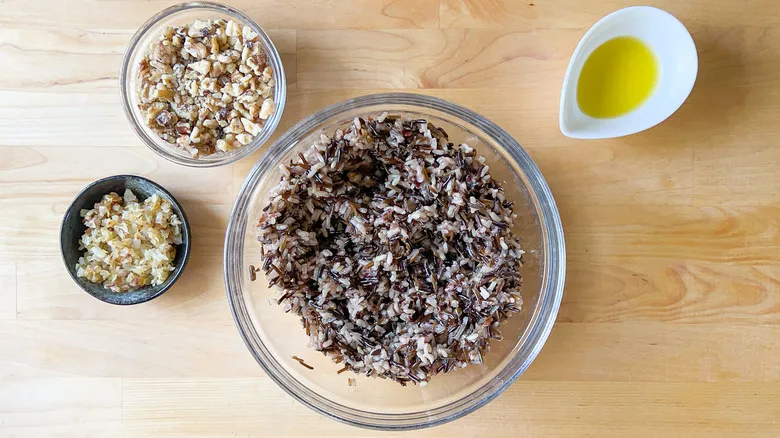
In a spacious mixing bowl, blend together the shallot, cooked rice, and walnuts. Drizzle in 1 tablespoon of olive oil and mix well. Adjust the seasoning with extra salt and pepper according to your preference.
Step 12: Fill the squash
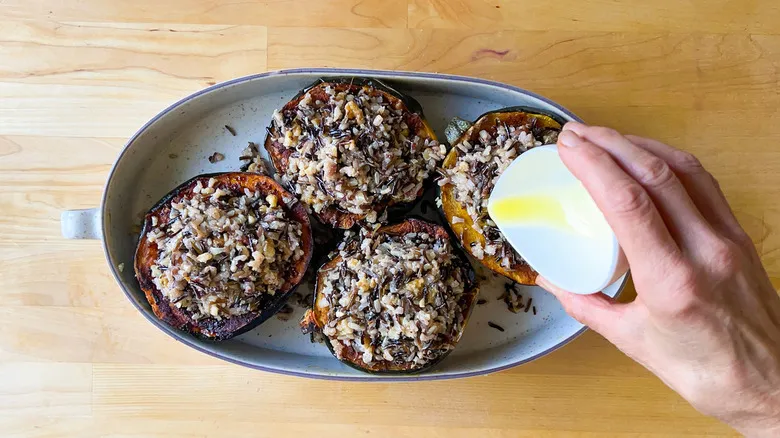
Distribute the rice mixture evenly into each squash cavity. Drizzle the remaining tablespoon of olive oil over each one.
Step 13: Bake the stuffed squash
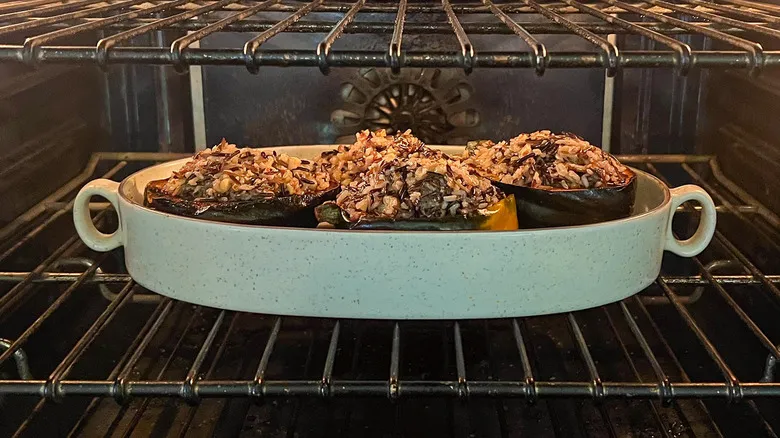
Place the stuffed squash back in the oven and bake for approximately 15 minutes, or until it is golden brown and thoroughly heated.
Step 14: Prepare the pomegranate
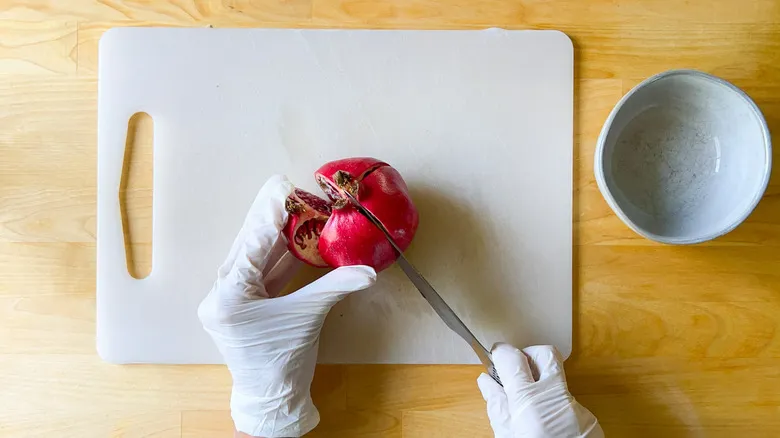
As the squash bakes, make 4 cuts in the pomegranate to divide it into quarters.
Step 15: Remove seeds from the pomegranate
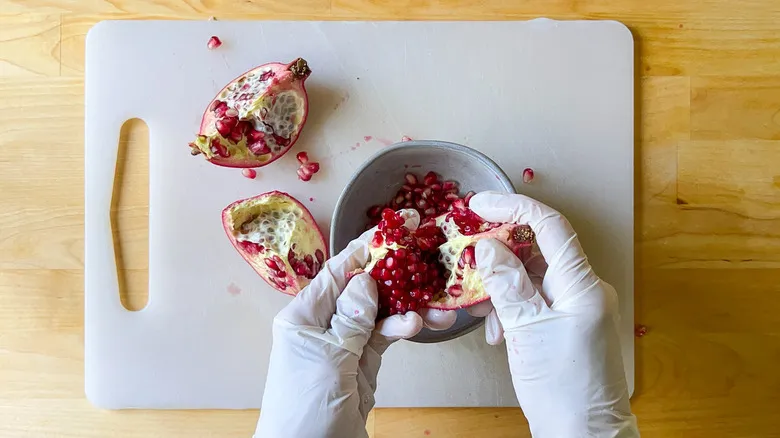
Separate the quarters and gently extract the seeds from the husk. Wear gloves to avoid staining your fingers with the juice.
Step 16: Mix the pomegranate relish
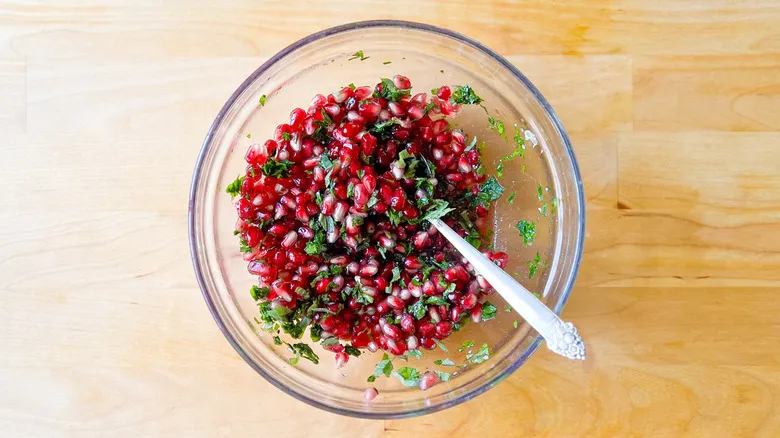
Mix all the ingredients for the relish in a medium-sized bowl.
Step 17: Finish and serve the stuffed squash

Take the baking dish out of the oven and spoon some pomegranate relish onto each half of the squash. Serve right away.
What are the cultural influences of this stuffed acorn squash?
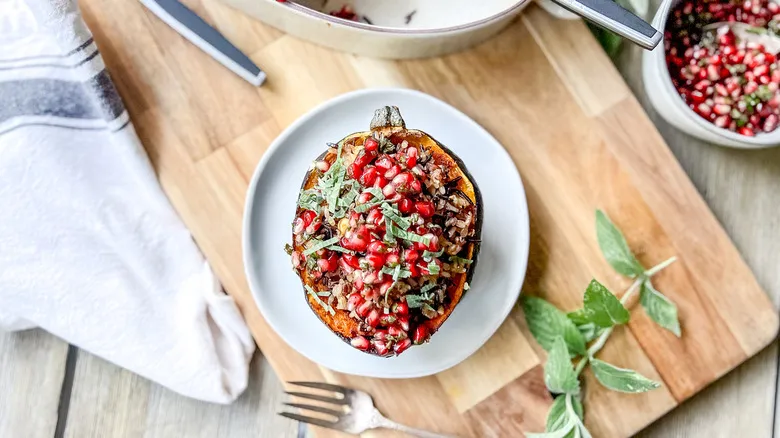
This visually striking stuffed squash dish is heavily inspired by Middle Eastern flavors. Ingredients like smoked paprika, cinnamon, and cumin are quintessential to the region's cuisine. This blend of spices enhances the naturally mild squash, infusing it with a warm flavor and a hint of heat that transforms the dish's profile. The vibrant pomegranate seeds, or arils, not only add a pop of color but also reflect their cultural significance in the Middle East, while offering a nutritious boost. Walnuts, parsley, and mint are also common staples in Middle Eastern cooking, reminiscent of dishes such as muhammara and tabbouleh.
The recipe also incorporates American elements. The sweet and nutty acorn squash is a native North American variety, often linked to Thanksgiving and autumn meals. It is frequently paired with beans and corn, collectively known as the three sisters, a fundamental trio in Indigenous cuisine. Additionally, wild rice (which is actually a type of grass) is indigenous to the Great Lakes region of the United States. Both ingredients pay homage to Native American culinary traditions.
Can you make stuffed acorn squash in advance?
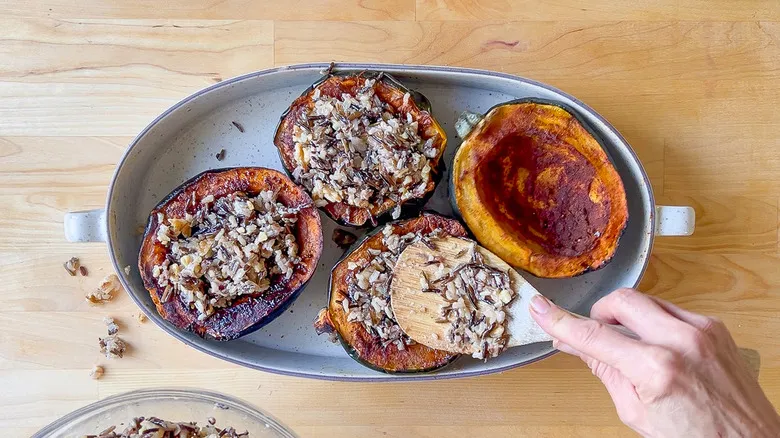
This dish is especially suited for Thanksgiving and other festive gatherings during the fall and winter seasons. To streamline preparation, several steps can be completed ahead of time, allowing you to finish the dish just before serving. Start by cleaning the squash and preparing the dry rub up to two days in advance. Make sure to wrap the squash halves securely in plastic wrap and store them in the refrigerator, and wait to apply the rub until shortly before baking to prevent the salt from drawing moisture out of the flesh. Additionally, you can roast the squash halves a full day ahead and keep them in the roasting dish covered with foil. The rice stuffing can also be prepared a day in advance and stored in the refrigerator.
On the day of serving, allow the squash and stuffing to come to room temperature before assembling and baking. If necessary, the filled squash can be reheated just before serving, but be careful not to let them dry out in the oven. The pomegranate relish is best made a few hours before serving and added just before presenting it to your guests.
Recommended

Tres Leches-Ish Rice Pudding Recipe
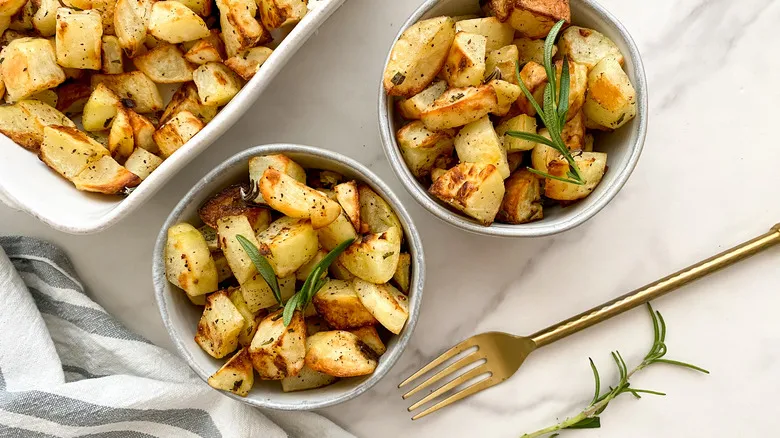
Rosemary And Garlic Roasted Potatoes Recipe
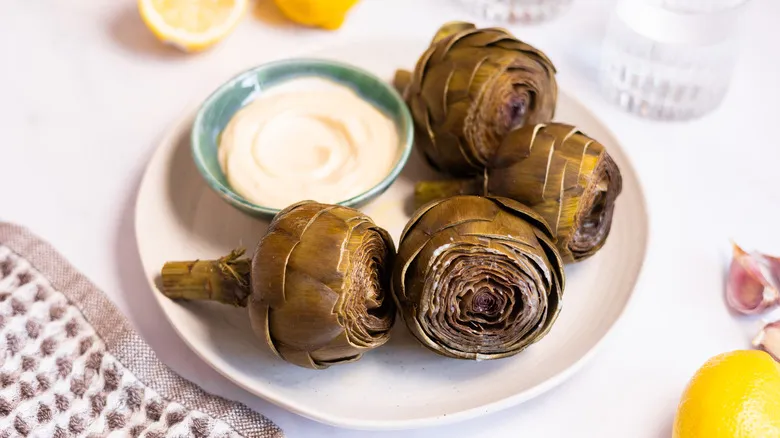
Basic Steamed Artichokes Recipe

Basic Steamed Brown Rice Recipe
Next up

